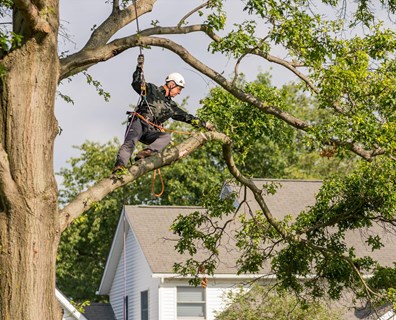Why do trees grow so tall? Trees grow so tall due to various factors, which include;
Competition for sunlight
It is the main reason why trees grow so tall. Trees growing in forests are primarily dictated by competition for solar energy. The struggle is either increasing to illuminated surroundings or enlarging the extent of the leaf to trap more sunlight.
Their height difference is due to the amount of light reaching them, and the fast-growing trees will outdo the slow-growing ones by getting a higher canopy. The direction of sunlight can also impact the height the tree will grow. Trees having unhindered sunlight will grow upright, while those searching for sunlight will emerge out first instead of up.
Genetics or species composition
The genetic composition of a tree will influence the height of a tree, and hence you will find some trees growing taller than the others. Certain individual trees have genetics that helps them get an edge and grow faster.
On the other hand, some trees might suffer from genetic drawbacks, making soaring to higher heights difficult. Trees having immense thickness reach higher altitudes than those with nominal stem thickness. Also, species having xylems with good water conductivity and better photosynthesis typically grow faster.
Availability of nutrients
The soil serves a great deal in the growth of trees and their height. Soils with sufficient nutrients like potassium and calcium will support a gigantic healthy tree. Soils with poor soil nutrients will result in shorter trees.
The arid and semi-arid regions have fewer nutrients in the soil due to less decomposition. In contrast, tropical regions have high nutrient content due to proper soil aeration, and the decomposition of organic matter in the soil is high. The nutrients offer food to the growing trees, and trees with high nutrient intake will grow taller than those receiving low nutrients.
Water availability
With ample water supply, trees will grow and attain high heights. A good indicator is the redwoods of Northern California and the fig trees of the rainforest; these areas have an adequate water supply.
Comparing these trees with the trees in the desert or mountainsides, there is a big gap in their height difference. Water assists the plant in the transportation of vital minerals through the tree. The tree absorbs minerals and uses them, and the tree will fail to support itself if there is insufficient water in the cells.
Topography
Topography impacts the aspect and ferocity of incoming solar energy, moderates the water relation in the soil, and influences soil erosion and soil relation in the soil and soil intensity. Trees growing on steep slopes face the challenge of shallower soil layers, drier soils, and inadequate nutrients due to soil erosion, which interferes with maximizing soil resources and developing the tree’s roots than those growing on gentle slopes.
Trees tend to grow so tall on north-facing slopes due to higher soil moisture and moderate solar radiation than on south-facing slopes, which receive high solar radiation with high temperatures and low moisture content in the soil of the Northern hemisphere. The high temperatures in those areas limit the trees’ growth, and trees might take years to gain a significant increase in height.
The right amount of wind
The wind builds a strong foundation for the tree by reinforcing the tree trunk and making it grow deeper roots. The trees require more strength to support their branches as they get taller. Trees exposed to the right amount of wind will gain reinforcement on their trunks and grow so tall. A poorly rooted tree will have stress when strong winds blow by disturbing its root-soil contact and reducing water absorption.
Harvest disturbance and lifetime
Trees gain maximum height due to the length of the period in which they are allowed to grow. Redwoods, the tallest trees, may live for as long as 500 to 800 years. To sustain their growth is if the disturbance of the trees is avoided. It is evident in the neighborhoods that trees are not tall due to disruptions from people or animals, unlike the trees growing in the wild. Without disturbance, the trees will also be able to grow upright and gain maximum sunlight, thus reducing the number of trees being overshadowed by the other neighboring trees.

